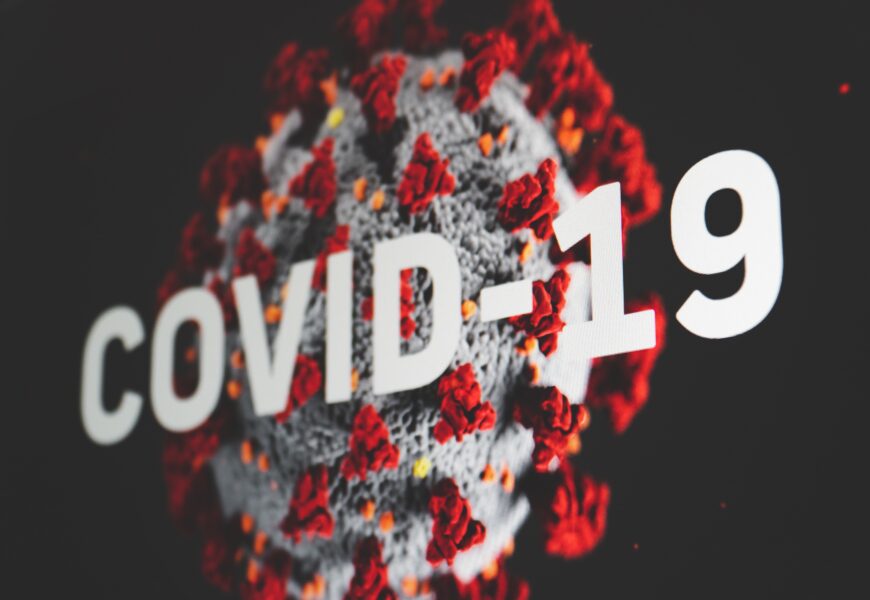Photo courtesy of Unsplash.
Grim feelings surface as the one-year anniversary of March 13, 2020—perhaps better known as the Friday the 13th or “shutdown day” in the United States—rounds the corner. We didn’t know it then, but this date marked the beginning of our new normal, one that required us to completely reimagine what it means to simply live. A year filled with unimaginable loss and struggle, it also showed us the power of human resiliency and (virtual) connection. Reflecting on those first days may help us understand where we started, how far we’ve come, and where we are headed.
On March 11, 2020, the World Health Organization (WHO) declared the coronavirus outbreak a pandemic. Within the coming days, hundreds of schools nationwide closed indefinitely, stay-at-home orders were enacted, and thousands of Americans transitioned to a work-from-home environment. The NBA, NCAA, and MLB all either suspended or postponed their seasons, and Disney Parks in California, Florida, and France closed their doors—something that had historically been reserved for extreme weather events and national tragedies. The dining, entertainment, and travel industries were brought to a standstill, and who can forget the national toilet paper shortages? These closures and resource depletions would only worsen throughout the spring.
As Wall Street suspended trading and the U.S stock market fell by 10%, Congress worked to pass a financial aid package to extend unemployment insurance and paid sick leave, in addition to expanding food assistance and free COVID-19 testing. However, the virus was already running rampant throughout the country; without equitable and reliable access to COVID-19 testing, as well as the conflicting information and varying guidelines for wearing a mask in public, COVID-19 spread like wildfire. By March 13, 2020, the United States had reported 1,629 coronavirus cases and 41 deaths. Less than two weeks later, on March 26, there were 81,321 confirmed cases and more than 1,000 deaths.
The implications for this rapid spread of COVID-19 across the country were far-reaching. Unemployment emerged in unprecedented numbers; in April 2020, the national unemployment rate reached 14.7% and more than 20 million Americans were left without work. As a result, many lost health insurance—a rather dire situation considering the context of living during a pandemic. Students, from ages 5 to 25, had to adapt to remote learning, while teachers and professors attempted to navigate education during these unknown times. The continued rise in cases overwhelmed our hospitals and health care workers. And with a national personal protective equipment (PPE) shortage, medical professionals and frontline workers were left without a sufficient supply of N95 masks, face shields, and gowns. In an effort to “stop the spread,” state and local officials across the country implemented various stay-at-home orders, social distancing guidelines, and eventual mask mandates. But with the continued downplay and denial of the virus from the federal government, many wondered if the United States would ever see the light at the end of the tunnel.
A small flicker of hope emerged at the end of the summer when the CDC began vaccine distribution plans. After a turbulent presidential election that divided the nation, there was one thing that the country could stand behind: an Emergency Use Authorization (EUA) by the FDA for the Pfizer and Moderna COVID-19 vaccine in December. It is hard to imagine a better holiday gift than that.
Today, more than 80 million vaccines have been administered, and the recent EUA for the Johnson & Johnson single-dose COVID-19 vaccine is expected to advance the nation’s vaccine rollout plan. Furthermore, the FDA has issued an EUA for the monoclonal antibody treatment, which has shown to significantly reduce COVID-19 related hospitalization and death in those experiencing mild to moderate COVID-19 symptoms. Accelerating vaccine distribution, expanding COVID-19 testing, and increasing the production of PPE through the Defense Production Act is a top priority of the Biden administration. And as more COVID-19 variants emerge, the race to vaccinate the nation is more important than ever.
A year after the infamous March 13, 2020, the United States has reported almost 30 million COVID-19 cases, and more than 500,000 Americans have lost their lives to this devastating disease. President Joe Biden and First Lady Dr. Jill Biden held a memorial on February 22, 2021 to honor the half a million Americans who passed from COVID-19. President Biden, a man well acquainted with grief himself, spoke to the nation as the country experiences unprecedented loss. Echoing his remarks from the day before his inauguration at the COVID-19 Memorial at the Reflecting Pool, President Biden said: “To heal, we must remember.”
While the road ahead remains uncertain, there is comfort in knowing that every day we inch closer to a life that is familiar—a life where we can hug our loved ones, gather for celebrations, big or small, and enjoy the simple pleasures in life, many of which we didn’t realize how much we needed until they were gone. Wherever you are in the world, may this March 13th be better than your last. And may all your future March 13ths be better than that of 2020.










